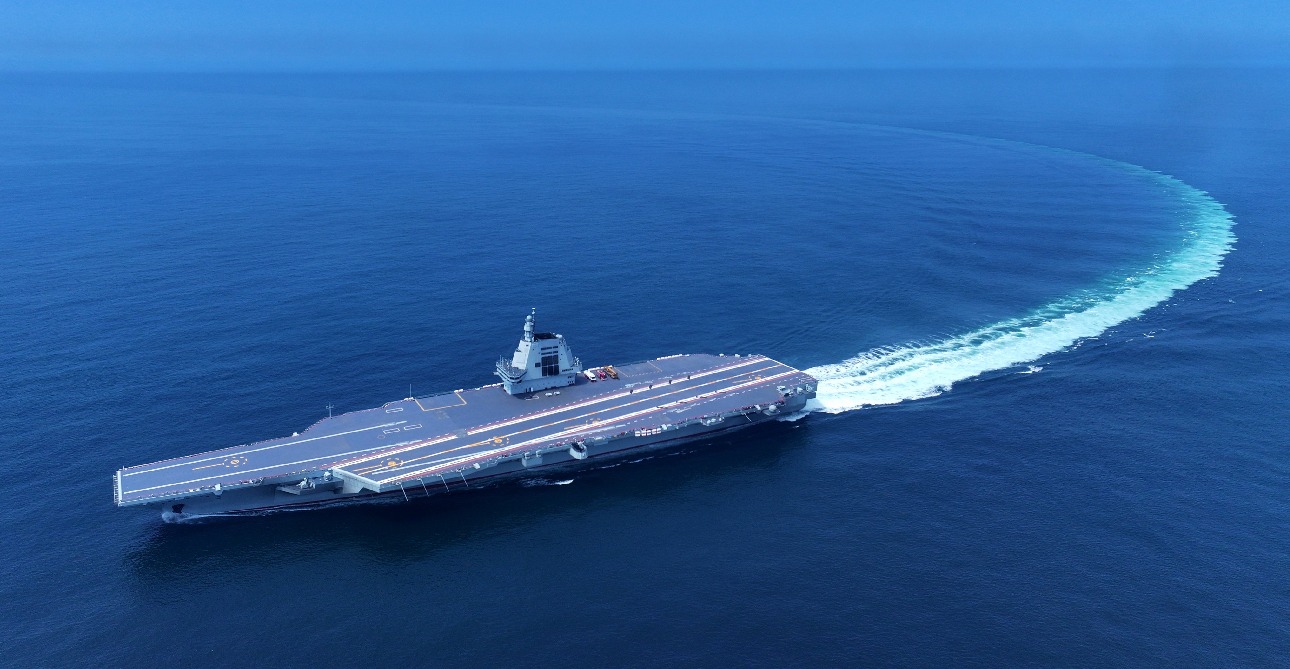Beijingwalker
Elite Member
- Nov 4, 2011
- 76,728
- 104,216
- Country of Origin

- Country of Residence

China Is Flexing Its Aircraft Carrier 'Muscles' All over Asia
September 24, 2024
China’s naval power is expanding as all three of its aircraft carriers are now active in military exercises. The Type 001 Liaoning recently sailed near Japan’s home islands, marking its first appearance in the area.
September 24, 2024
Summary and Key Points: China’s naval power is expanding as all three of its aircraft carriers are now active in military exercises. The Type 001 Liaoning recently sailed near Japan’s home islands, marking its first appearance in the area.
-The Type 002 Shandong conducted certification tests in the South China Sea, while the Type 003 Fujian is undergoing sea trials, expected to enter service by 2026.
-With plans for six carriers by 2035, China’s People's Liberation Army Navy (PLAN) is increasing its reach and capabilities in the Indo-Pacific. This marks a growing strategic challenge for regional powers and the U.S. Navy.
China is Flexing its Carrier Muscles Further and Further into the Indo-Pacific
This Wednesday will mark the 12th anniversary of the official commissioning of the People's Liberation Army Navy's (PLAN's) Type 001 Liaoning aircraft carrier. Originally laid down for the Soviet Navy, the unfinished warship was sold by Ukraine following the dissolution of the Soviet Union to be converted into a floating hotel and casino before it was refurbished, becoming the first Chinese aircraft carrier.In the dozen years since, Beijing has built two additional carriers – while it has expanded its naval capabilities, flexing its proverbial muscles further into the Indo-Pacific.
On Monday, Chinese state media outlet the Global Times reported that all three of the PLAN's aircraft carriers have been carrying out military exercises or have been involved in tests.
"China's aircraft carrier program has entered the fast lane," the outlet reported citing military observers including Senior Colonel Zhang Xiaogang of the Chinese Ministry of National Defense, who suggested the recent deployments had a "goal of enhancing combat capabilities.
Chinese Carrier in Japanese Waters
The Type 001 Liaoning – which was commissioned on September 25, 2012 – took part in an exercise that brought the 54,500-ton warship near the Japan home islands for the first time. The flattop was accompanied by a strike group that consisted of two destroyers. The Chinese naval flotilla transited the waters near the disputed but Japanese-controlled islets named the Senkakus by Tokyo and Diaoyus by Beijing.The PLAN warships entered Japan's "contiguous zone," an area beyond its territorial waters but still well within the distance from land where Toyko controls the maritime traffic.
"China has increasingly expanded and intensified military activities around Japan in recent years," Japan's Deputy Chief Cabinet Secretary Hiroshi Moriya told the Associated Press. "We will continue to closely watch Chinese warships' activity around Japan and the regional waters while ensuring information gathering and vigilance."
China's Carrier Reach
While the Type 001 Liaoning was operating near the Japanese home islands, the Type 002 Shandong, the PLAN's first domestically-built carrier, took part in a certification test for nighttime operation with a new batch of People's Liberation Army Naval Air Force (PLANAF) pilots in the South China Sea.According to the Global Times, the training will enhance the PLAN's aviation force's "round-the-clock, all-domain combat capabilities, as more fighter pilots are qualified to operate" from the three aircraft carriers.
The PLAN's third carrier, the Type 003 Fujian has been conducting its latest round of sea trials, and it is on track to enter service by early 2026 – but progress has been steady and there has been speculation it could be even sooner. Beijing has called for the PLAN to operate six carriers by 2035, closing the gap with the U.S. Navy.
As Capable as the U.S. Navy?
Although not nuclear-powered like the U.S. Navy's Nimitz and Gerald R. Ford classes of supercarriers, the PLAN could soon match America's capabilities."As a general pattern, aircraft carriers spend one-third of their time under maintenance, one-third of their time in training, and one-third of their time in deployment, so having three or more carriers would mean always having at least one carrier group ready for a mission," another Chinese military expert told the Global Times, adding that Beijing remains committed to building more advanced flattops with greater capabilities, but also in training more pilots.
That will allow greater reach for the PLAN – and all three efforts were on full display this month. More pilots are being trained from the Type 002 Shandong, the capabilities of the Type 003 Fujian are being tested, and the Type 001 Liaoning is sailing where no Chinese carrier has sailed before!


